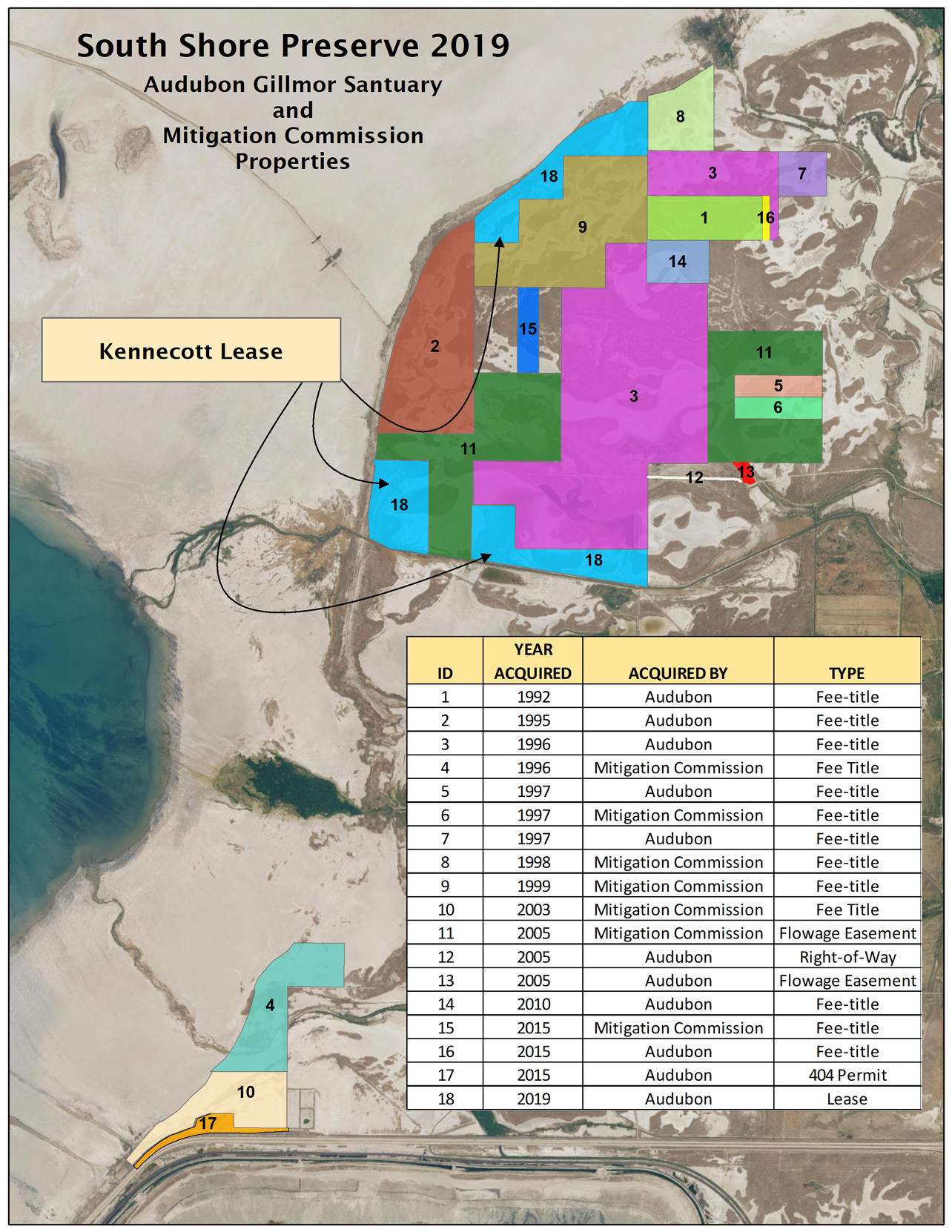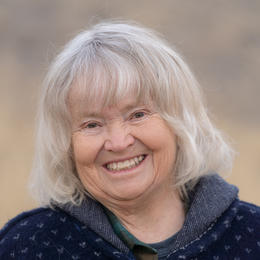On May 17, 2019, the National Audubon Society and Kennecott Utah Copper (Kennecott) entered into a rent-free lease bringing three disconnected parcels totaling 380 acres of upland and wetland habitat under Audubon management. This moment was the 18th land transaction in Audubon’s long journey to piece together a large jigsaw puzzle of land acquisitions in order to create a sanctuary for shorebirds on the shoreline of Great Salt Lake.
A little bit of background helps to understand the critical importance of Kennecott’s parcels.
The story started thousands of years ago when the Jordan River flowed through the area we today call the South Shore Preserve, a complex of properties that includes Audubon’s Gillmor Sanctuary and properties owned by Utah Reclamation Mitigation Conservation Commission. As the river’s freshwater slowly merged into the salty waters of Great Salt Lake, a large delta was formed. Eventually, tectonic movements deep beneath the Earth’s surface shifted this major river eastward, leaving behind a dry but largely intact topographic land sculpture of shifting channels, distributaries, and upland islands.
In 1994, when Audubon received funding from the Mitigation Commission to study the feasibility of creating a large wetland and upland sanctuary in this area, disbelief followed. Over the last century, the land had been divided into many ownerships with disparate agendas. Public access was strictly and rigidly prohibited. A prevalent view was that Audubon would not even get access to some of the properties to do the study without getting shot. Despite the challenges, Audubon began to acquire land parcels for the sanctuary.
Similarities exist between the song of the Philadelphia Vireo and the story of the South Shore Preserve. The vireo sings a pleasant song of notes punctuated by pauses that often last longer than the notes. Each successful transaction came with its own unique timeline; with times of action and times of waiting. Some happened quickly, such as Florence Gillmor’s instant captivation by Audubon’s vision to make her land part of a large bird sanctuary (# 2 and 3 on the map), yet another negotiation took ten years and 30 drafts!

The Kennecott transaction began when Audubon first contacted Kennecott in 1996 about the possibility of obtaining their three properties located within the study area. Throughout the following years many successive negotiations were undertaken with different personnel, but for various reasons these talks always ended, not with rejections, but pauses. There is often great power in the pause, waiting quietly without pushing, allowing shifts of circumstance that come only when given time.
During periods while Audubon waited, the relationship with Kennecott did not stand still. Kennecott’s nearly 4,000-acre Inland Sea Shorebird Reserve is located along the shoreline of Great Salt Lake immediately south of South Shore Preserve. Management collaborations between these two adjacent wetland sites have been so strong through the years that one could almost be convinced the two sites are one, managed by a single entity.
The 117-acre acquisition in the Lee Creek Area (#10 on the map), was acquired through the teamwork of Kennecott, Mitigation Commission, Audubon, and the State of Utah. Kennecott provided the trucks, dumpsters and tipping fees for a massive volunteer clean-up of the Lee Creek Area (#4, 10, and 17) which removed four tons of trash. Birdlife International and Kennecott provided funding for the five interpretive signs, small parking lot, and a brochure for the Lee Creek Area. Recently, Audubon and Kennecott worked together as the major drivers in convincing Salt Lake City to zone about 4,000 acres of land adjacent to Gillmor Sanctuary as a Natural Area (non-developable) in their 2016 Master Plan.
In 2019, the seed that was planted in 1996 had sprouted, grown roots, stems, leaves, and was ready to blossom. The time had finally arrived to add Kennecott’s three parcels to Audubon management. Audubon had received funding for major infrastructure additions. One of the options was to repair a 62-foot gap in the bank of the Goggin Drain. The largest land feature from the ancient Jordan River Delta is an almost level 254-acre floodplain where water pooled long ago when the river overflowed its banks during spring run-off. But the gap on Kennecott’s property resulted in water that was introduced by Audubon to drain directly into the Goggin without spreading out. During discussions of repairing the gap so Audubon could flood the small area they owned, Kennecott suggested a rent-free lease for their property which would allow Audubon to flood the entire 254-acre area and the site could realize its full potential as a magnificent productive shorebird habitat.
Thanks to Kennecott, water will once again flow freely, following the ancient waterways—instead of property lines—after a 2,600-year absence.






